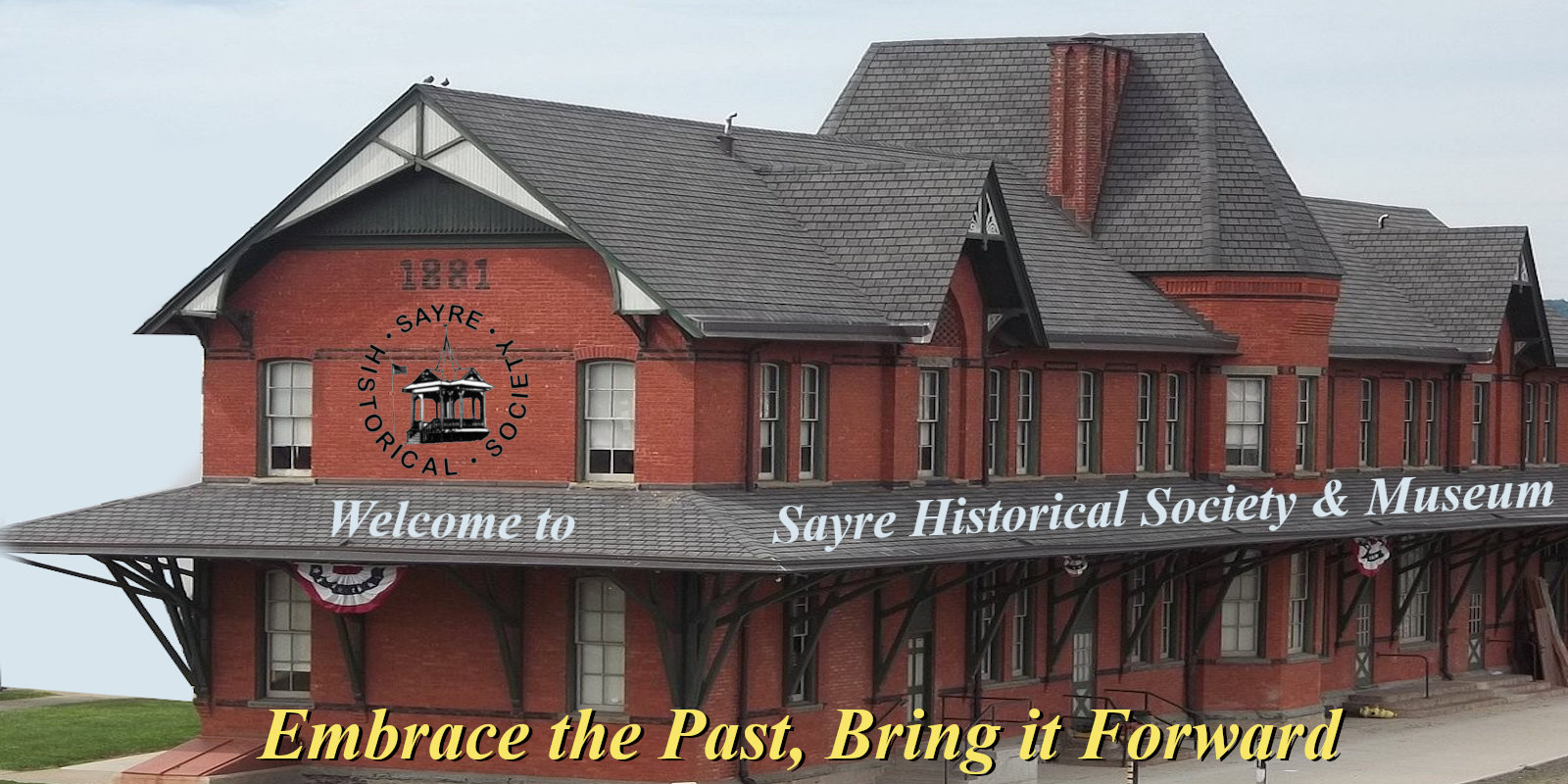The Sayre Historical Society and Museum is preserving the immense wealth of Sayre, PA’s history. The Society became a reality in 1989 as a result of the centennial year of Sayre, Pennsylvania. In 2002, with the assistance of the Sayre Borough, the Sayre Historical Society leased the former Lehigh Valley Railroad Passenger Station located at 103 S. Lehigh Ave, Sayre, Pennsylvania 18840

MUSEUM & GIFT SHOP HOURS OF OPERATION:
12pm - 4pm Saturdays and Sundays
Closed for the season - 12/1/24.
For special tours, call 570-882-8221.
Phone calls are monitored daily.
Gift shop items may be ordered on line and, along with membership, may be paid with your credit card.
Click here for directions
Schedule of Events Books in Gift Shop
We will continue to keep you up to date on what's happening here and on Facebook. Also you can reach us by email at sayrehistorical@yahoo.com or on our museum phone at 570.882.8221 and leave a message.
Thank you for your continued support.
Sayre’s Rich History dates back before the town was incorporated in 1891. To understand Sayre’s history, here you can dive in to get to know the history of Sayre, Pennsylvania. Discover some of the people who built Sayre. Take a stroll through the landmarks of a Victorian railroading town.
The Sayre Historical Society Museum is large for a small town museum. There are artifacts on Sayre at every turn. To learn about the history of Sayre, who contributed to Sayre, and just a small of taste what the Sayre Historical Society Museum has to offer
The Dedicated Team of Volunteers is the backbone of keeping the Sayre Historical Society Museum going. Please take a moment to get to know our valuable team. They devote endless hours of their free time to ensure the history remains, alive, preserved, and most of all accessible to all.
